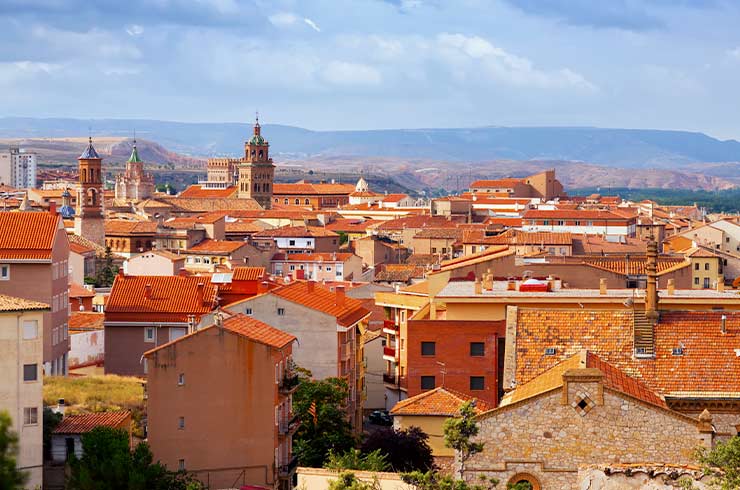A surprising city in the heart of Aragón
If you’ve ever wondered what to do in Teruel, get ready to discover one of the most surprising and authentic destinations in Aragón.
This small city, often overshadowed by larger capitals, is a true treasure for those seeking corners filled with history, living traditions, and landscapes that invite calm and reflection.
Known for its extraordinary Mudejar art, declared a UNESCO World Heritage Site, Teruel is much more than a collection of brick and ceramic towers: it is a land of eternal legends, unique flavors, and a welcoming atmosphere that you can feel in every street.
Living history, culture, and leisure at every corner
Located in the heart of the southernmost province of Aragón, Teruel is a medieval jewel full of surprises.
Here, echoes of the past blend seamlessly with cultural activities, gastronomic routes, and outdoor adventures.
The city is famous for the moving story of the Lovers of Teruel, reenacted every February during one of the most spectacular historical festivals in Spain. It’s also home to Dinópolis, the largest paleontological park in Europe—perfect for families.
A culinary identity full of character
Discovering what to do in Teruel also means letting yourself be seduced by its traditional cuisine.
Few places in Spain can boast such distinctive products: Teruel D.O.P. ham, black truffle, artisan cheeses, and high-altitude wines turn every meal into a flavorful celebration.
Walking through its arcaded streets, admiring its Mudejar towers at sunset, or enjoying a tapa on a terrace in Plaza del Torico are simple yet deeply satisfying pleasures.
🍲 After exploring Teruel, why not dive into Zaragoza’s rich gastronomy? From traditional recipes to unique local specialties, discover this guide to 10 dishes you should taste in Zaragoza and enjoy the authentic flavors of Aragón.
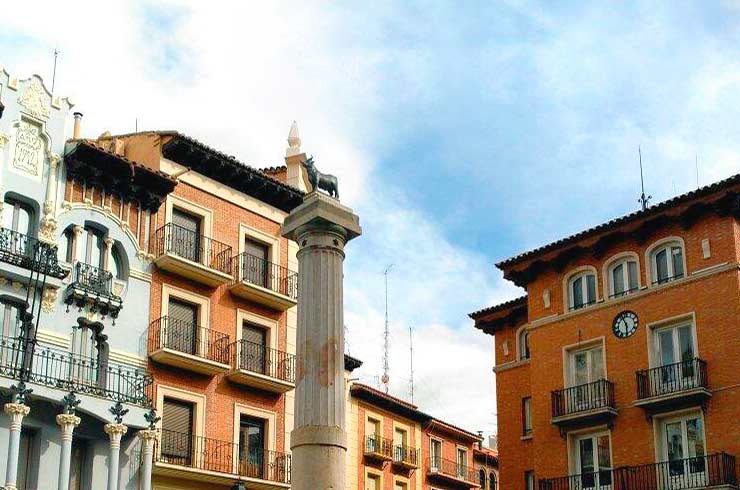
A natural and rural setting that captivates
But Teruel is just the gateway to a fascinating province. Just a few kilometers from the capital, you’ll find some of Spain’s most beautiful villages, like Albarracín, with its cliffside walls, or the Matarraña region, nicknamed the Aragonese Tuscany for its olive groves and vineyards.
Canyons, hiking routes, hidden caves, and walkways over crystal-clear waters turn any escape into an unforgettable adventure.
Whether you’re traveling as a couple, with kids, or friends, there are countless plans for every taste and season.
A complete guide to enjoying Teruel
In this comprehensive guide, we’ve gathered the best ideas, routes, and recommendations so you know exactly what to do in Teruel and its province: must-see places, guided tours, hidden gems, and practical tips to make the most of your visit.
Take note, get ready to explore one of Spain’s most beautiful and authentic cities… and enjoy every step!
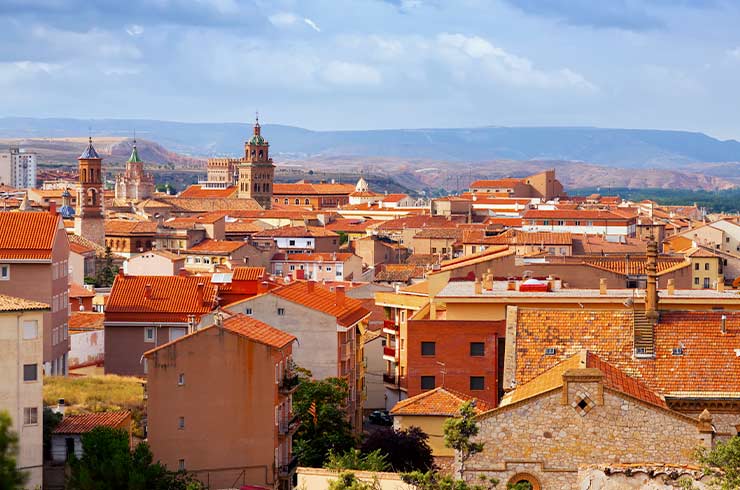
Teruel, the Capital of Mudejar Art
One of the first things you should know if you’re planning what to do in Teruel is that this city is a true global reference for Mudejar Art.
In fact, its monumental ensemble was declared a UNESCO World Heritage Site in 1986, becoming one of Aragón’s greatest sources of pride.
Unique in the world, Mudejar art emerged from the peaceful coexistence of Islamic and Christian traditions during the Middle Ages, resulting in a fascinating fusion of styles, materials, and techniques that continues to captivate architects, historians, and curious travelers from around the globe.
The historic center of Teruel feels like an open-air museum: cobbled streets winding between noble houses, arcaded squares, and most notably, its iconic brick towers adorned with green and white glazed ceramic.
Each tower, church, and architectural detail tells a story—of artisan guilds perfecting their craft over centuries, of noble families competing to beautify their buildings, and of a community that embraced cultural diversity as a core identity.
Must-See Mudejar Art Sites
- El Salvador Tower: Considered one of the city’s most iconic landmarks, El Salvador Tower combines beauty with function. Inside, you’ll find an interpretation center where you can learn about the evolution of the Mudejar style, secrets of its construction, and interesting facts about its restoration.Climbing to the top of the tower is a must: it offers one of the best panoramic views of Teruel, with its reddish rooftops and the silhouettes of other towers etched against the horizon.
- Cathedral of Santa María de Mediavilla: This cathedral is undoubtedly the crown jewel. Its spectacular polychrome wooden ceiling, painted in the 13th century, is unique in Spain and considered one of the masterpieces of Aragonese Mudejar art.Each panel illustrates scenes of medieval daily life, mythological figures, and vegetal motifs that appear to float above the cathedral’s aisles. Be sure to notice the small details: fantastical animals, knights, hunting scenes, and even depictions of medieval trades and guilds. It’s like a medieval comic strip painted on wood.
- San Martín Tower and San Pedro Tower: Both are part of this unique monumental ensemble. San Martín Tower stands out for its slender structure and the richness of its exterior decoration—crafted brickwork, glazed ceramic, and geometric patterns reflecting Islamic influence. San Pedro Tower, on the other hand, is next to the church that houses the Mausoleum of the Lovers of Teruel, another key spot in the city. Its interior surprises with its intimate atmosphere and the beauty of its cloister—perfect for a pause during your visit.
To fully enjoy this journey through time, nothing beats booking a specialized guided tour.
A local guide will help you uncover hidden details, fascinating stories of Mudejar masters, and legends passed down through generations.
It will turn your visit into a truly unforgettable experience.
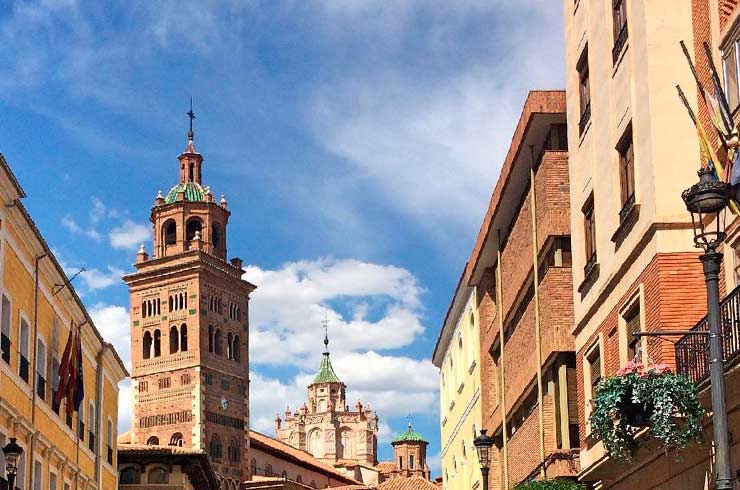
🌿 If Teruel’s history fascinates you, you’ll also love the Belchite region, where olive trees and olive oil shape the landscape and culture. Learn more in this article about discovering Belchite through its olive groves and olive oil, a journey that combines heritage and gastronomy.
The Lovers of Teruel Route
If there is one story that explains why Teruel is known as the city of love, it’s that of Isabel de Segura and Diego de Marcilla—the famous Lovers of Teruel.
Their legend is one of the great tragic love stories of Spanish literature, often compared to Romeo and Juliet, with the unique twist that it is based on real events documented in the 13th century.
This moving tale is part of the city’s identity and is brought to life every year during one of the most impressive medieval festivals in Aragón.
According to tradition, Diego de Marcilla, the second son of a noble but penniless family, fell deeply in love with Isabel de Segura.
To marry her, her father demanded that Diego first gain wealth and honors.
Diego set off to fight for five years—the time they had agreed upon to return with a worthy dowry.
Isabel waited, but as time passed, her parents forced her to marry another suitor. When Diego returned, he found her just married.
Desperate, he asked for a kiss to ease his pain, but Isabel, faithful to her new role as a wife, refused… and Diego fell dead of sorrow at her feet.
The next morning, during the wake, Isabel couldn’t bear the remorse and approached to give him the kiss she had denied in life.
She died beside him, sealing their story as one of eternal love.
🏛️ Just like Teruel, Calatayud is a city full of history, culture, and hidden treasures. Stroll through its old town, admire the Mudejar art, and taste its renowned wines. Take a look at this complete guide on 10 things to do in Calatayud and keep discovering Aragón’s wonders.
Mausoleum of the Lovers
Today, anyone looking for what to do in Teruel cannot miss this must-see site.
The Mausoleum of the Lovers houses the mummified remains of Diego and Isabel, discovered in 1555 and preserved to this day.
The visit is much more than a tour of a funerary monument—it’s an immersive experience blending art, archaeology, and emotion.
The complex includes the Church of San Pedro, a stunning example of Teruel Mudejar architecture, and a beautiful cloister perfect for contemplation and photography.
Inside the mausoleum, you’ll find sculptures and exhibition elements that recreate the medieval atmosphere and explain the enduring significance of this legend over the centuries.
Every February, the city transforms into the Middle Ages to celebrate the Wedding of Isabel de Segura, a festival declared of National Tourist Interest, where hundreds of locals dress up as characters from the era.
If you have the chance to visit during this time, you’ll see streets filled with banners, artisan markets, jousts, parades, and the moving reenactment of the Lovers’ reunion—one of the most emotional moments you can experience in Teruel.
To immerse yourself even more in this story, we recommend booking a guided tour that covers the Mausoleum, the church, and the cloister, with a local guide who can share all the secrets and anecdotes.
Check updated schedules on the official website of the Mausoleum of the Lovers and plan this essential stop.
What to Do in Teruel with Kids: Dinópolis and More
Teruel is also the dinosaur capital of the Iberian Peninsula. It’s no coincidence that every year thousands of families and paleontology enthusiasts come here to travel millions of years back in time.
If you’re looking for what to do in Teruel with kids, get ready for an experience that combines learning, adventure, and plenty of fun.
The province is one of the richest areas in Europe for dinosaur fossils, and many of these discoveries have given rise to a unique network: Dinópolis.
Dinópolis is much more than a theme park. It’s an innovative paleontological complex that combines a museum, interactive activities, and live shows—designed so that both children and adults can feel like real prehistoric explorers.
Its main site is located in the city of Teruel, but what many don’t know is that there’s a network of satellite centers spread throughout the province—Galve, Albarracín, Castellote, Rubielos de Mora, Riodeva, and Peñarroya de Tastavins—each focused on a specific aspect of the dinosaur era.
-
- Dinópolis Teruel: The main venue features an impressive exhibition of original fossils, life-sized reproductions of species discovered in the region, and themed rooms that explain everything from the formation of the Earth to the extinction of these giants. Kids love the Paleosenda, the time simulator, and the live shows with animatronic dinosaurs that seem to come to life.
- Paleontological routes around the province: The province of Teruel is a paradise for “fossil hunters.” You can combine a visit to Dinópolis with a trip to Galve, one of the first places in Europe where dinosaur footprints and fossils were discovered. There you can see replicas of giants like Aragosaurus or Iguanodon and follow trails featuring life-size skeleton replicas in the middle of nature. Another popular option is Riodeva, where the Turiasaurus riodevensis was found—one of the largest dinosaurs in Europe, measuring over 30 meters long.
To make the most of this experience, we recommend planning your route in advance, as some centers are only open during peak season or on weekends.
The combination of science, nature, and fun makes Dinópolis an essential visit for the whole family. Don’t forget to check the official Dinópolis website for updated schedules, combo tickets, and special activities for kids. It’s an unforgettable way to learn while enjoying Teruel with your little ones!
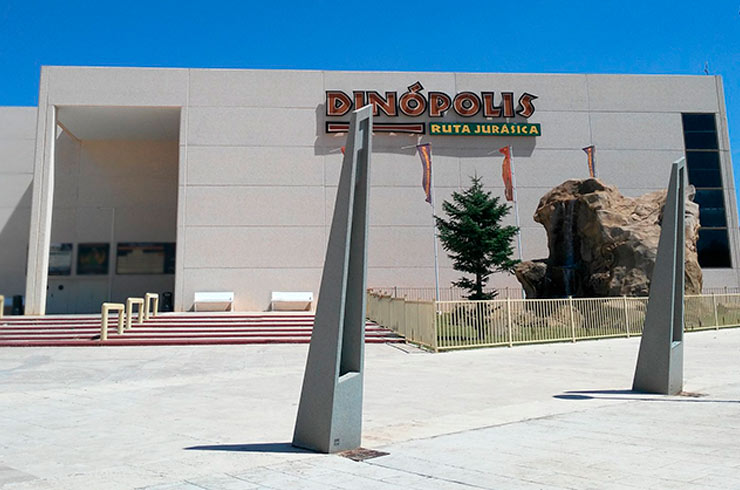
Flavors of Teruel: Local Gastronomy
If you’re a food lover, this section is for you.
Discovering what to do in Teruel undoubtedly involves immersing yourself in its rich culinary tradition—one of the most unique and authentic in Aragón.
Here, the cuisine is rooted in the pastoral and agricultural life of the Sierra de Albarracín, Gúdar-Javalambre, and Bajo Aragón—regions where altitude, climate, and lifestyle have shaped simple, flavorful dishes full of character.
The dry cold of these lands, long winters, and the quality of the local white pig breed have made Teruel D.O.P. ham a first-class gastronomic ambassador.
But it’s not just the ham that stands out: the province is also rich in mushrooms, artisan cheeses, cured meats, extra virgin olive oil, and of course, the prized black truffle, often referred to as the “black diamond of the kitchen.”
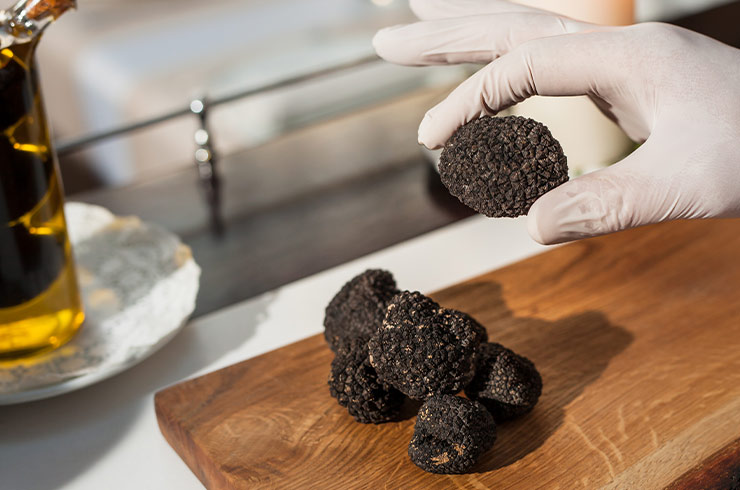
Typical Dishes You Can’t Miss
- Teruel D.O.P. Ham: One of the first hams in Spain to receive Protected Designation of Origin status. It is cured at over 800 meters above sea level, giving it a delicate, low-salt flavor and a fat that melts in the mouth. The best way to enjoy it is freshly sliced, served in thin pieces with a local red wine or rustic bread.
- Turolense Migas: A humble and delicious dish, a symbol of resourceful cooking. Made with dry bread, pork belly, garlic, and longaniza sausage, it’s often served with fresh grapes or a fried egg. Best enjoyed at a rural inn after a hike through the mountains.
- Black Truffle: The Tuber melanosporum is one of the province’s greatest treasures. In winter, many restaurants offer truffle-themed menus, from creamy soups and truffled eggs to meats and cheeses infused with its aroma. If you want to dive deeper into this delicacy, be sure to visit Sarrión—the truffle capital—where you can join fairs, gastronomic events, or even go truffle hunting with a trained dog.
But the gastronomic experience in Teruel goes far beyond just sitting at the table.
A great way to explore local flavors is by joining an organized gastronomic route: visits to ham curing facilities, artisan cheese makers, family-run high-altitude wineries, or cooperatives that produce extra virgin olive oil.
Many villages also host weekly markets and gourmet shops where you can take home the best of Teruel’s pantry.
If you visit Teruel in autumn or winter, don’t miss the chance to attend a local fair or themed event, such as the Teruel Ham Fair or the Black Truffle Fair in Sarrión—two must-attend gatherings where you can meet producers, taste new recipes, and experience the pride this land takes in preserving the quality of its products.

Nature Trails and Charming Villages
Beyond its beautiful historic center, the province of Teruel hides spectacular landscapes and centuries-old villages that seem frozen in time.
Exploring its regions is a perfect way to complement your list of what to do in Teruel and turn your getaway into an unforgettable journey.
From medieval walls rising over canyons to trails winding through crystal-clear waters and dreamlike forests, here are some routes and villages you shouldn’t miss.
Albarracín, One of the Most Beautiful Villages in Spain
Just 35 km from the capital, Albarracín is considered by many to be the most beautiful village in Aragón and one of the most spectacular in all of Spain.
Declared a National Monument, its walled profile and reddish houses perched above the bend of the Guadalaviar River create a postcard-perfect image that leaves every visitor breathless.
Walking through Albarracín means getting lost among cobbled alleys, carved wooden balconies, and viewpoints overlooking an impressive canyon.
Be sure to climb to the Andador Tower and walk along the medieval wall, where you’ll enjoy panoramic views that capture all the magic of the Sierra de Albarracín.
To complete your visit, stop by the Diocesan Museum or the Cathedral of El Salvador to explore its valuable artistic heritage.
Albarracín is also a paradise for hikers, with routes like the Protected Landscape of the Pinares de Rodeno, where you’ll find prehistoric cave paintings declared a World Heritage Site.
If you’d like to discover it with everything taken care of, check out our day trip to Albarracín—a comfortable and complete way to experience this medieval gem with local guides.
⛰️ If nature is what inspires you in Teruel, Aragón has even more to offer. Explore dramatic landscapes, waterfalls, and unique biodiversity in Ordesa and Monte Perdido National Park, one of Spain’s most breathtaking natural sites.
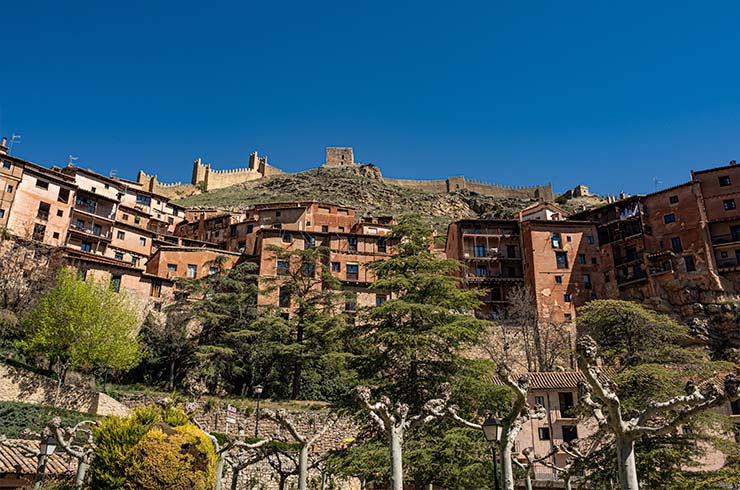
Parrizal de Beceite Route
If wild nature and crystal-clear waters are your thing, add this trail to your must-do list.
The Parrizal de Beceite, in the Matarraña region, is one of the most beautiful and accessible trails for the whole family.
It follows the Matarraña River, with wooden walkways that take you into a canyon with steep walls, lush vegetation, and turquoise pools.
The trail is about 8 km round trip and has no major difficulty, making it ideal for children.
Along the way, you’ll see fascinating rock formations like the Estrets del Parrizal—natural corridors where water flows between limestone rocks.
Be sure to wear proper footwear and bring a swimsuit in summer—there are sections where you can cool off in small pools.
To finish the day, the village of Beceite is perfect for a quiet stroll along its cobbled streets and medieval bridge over the Ulldemó River.
Grutas de Cristal in Molinos
For cave and geology enthusiasts, the Grutas de Cristal in Molinos are a true underground marvel.
Located in the Maestrazgo region, these caves are named for their stunning array of stalactites, stalagmites, and eccentric formations that glisten like crystals sculpted by nature over thousands of years.
The guided tour (highly recommended) covers about 620 meters of illuminated galleries, revealing rooms with evocative names such as the Marine Room, the Bat Hall, and the Grand Hall. Don’t forget to bring a jacket—the temperature inside stays around 14°C all year.
The experience is complemented by a small interpretation center in Molinos itself, a picturesque medieval village with stone houses, steep alleys, and a charming arcaded square perfect for soaking in the silence of the Maestrazgo.
If you’re looking for more inspiration for nature routes in the province, visit the official tourism website of the province of Teruel or explore our guided getaways to discover unique corners with expert locals.
It’s a perfect way to connect with the true essence of Teruel!
🌄 Within the province of Teruel, Albarracín is one of Spain’s most beautiful villages. Walk its cobbled streets, discover its medieval walls, and soak in the charm of this unique destination. Don’t miss this guide on what to do in Albarracín and enjoy another jewel of Aragón.
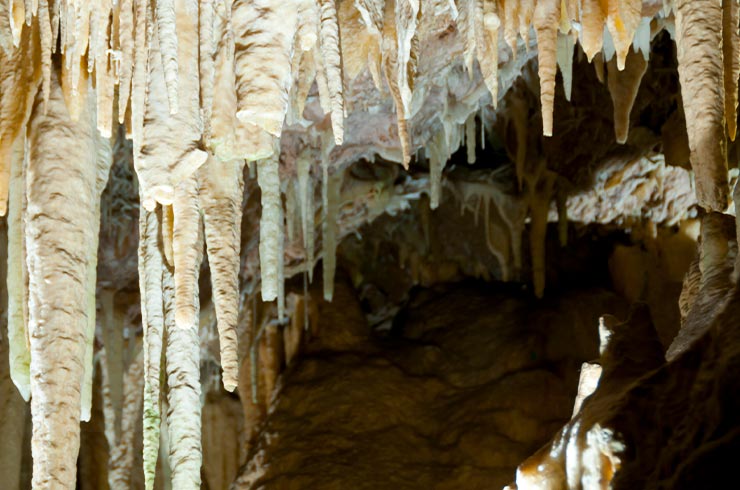
Events and Traditional Festivals
Teruel boasts a unique calendar of festivities that reflects its deep-rooted traditions and pride in its history.
If you’re wondering what to do in Teruel during special dates, take note of these one-of-a-kind celebrations that turn the city into a vibrant stage of folk culture, music, and historical reenactments.
- La Vaquilla del Ángel: Considered Teruel’s main festival, it takes place every July and transforms the city for three days into a hub of joy, local clubs, marching bands, and parades. The tradition dates back to the Middle Ages and centers around a symbolic bull-related ritual—the moment when the red scarf is tied to the rope bull is one of the most anticipated and photographed scenes. There are also open-air concerts, street food, and a lively tapas culture that invites you to celebrate like a true Turolense.
- The Wedding of Isabel de Segura: Every February, the city relives the legend of the Lovers of Teruel with a medieval reenactment that draws thousands of visitors. The streets are filled with banners, craft markets, jousting, parades, and theatrical performances where more than 17 reenactment groups bring historical characters to life. It’s a moving time-travel experience for all ages, showcasing the city’s deep commitment to its cultural roots.
Practical Tips for Your Visit
To make the most of everything Teruel and its province have to offer, here are a few tips to make your trip more comfortable and authentic:
- Pedestrian historic center: The old town is small, convenient, and perfect to explore on foot. Wear comfortable shoes, especially if you plan to climb towers or walk the walls in Albarracín.
- Continental climate: Teruel is one of the coldest cities in Spain, with dry and very cold winters. If you’re traveling between November and March, don’t forget thermal clothing, gloves, and a hat.
- Best time to visit: Spring and autumn are ideal for nature trails, while in winter you can enjoy black truffle season and snow in the Gúdar-Javalambre range if you like skiing.
- Transport: Driving is the most practical way to explore the surrounding areas. There are bus and train connections from Zaragoza and Valencia, but renting a car gives you the freedom to explore villages and natural routes.
- Accommodation: Book in advance if you’re traveling during key events like La Vaquilla or the Wedding of Isabel de Segura. There are charming hotels, rural cottages, and family-friendly lodgings for all tastes.
- Combine city and countryside: Plan at least two or three days to enjoy not only the capital but also Albarracín, Matarraña, or Maestrazgo. Each region has magical spots that are well worth a visit.
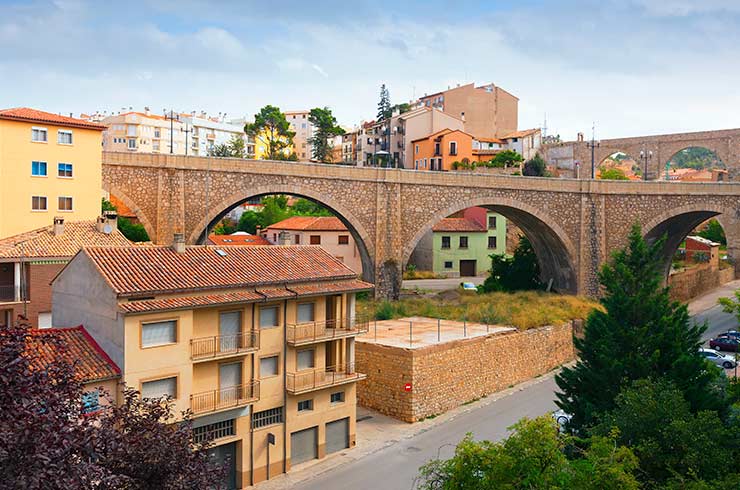
Conclusion: Teruel, So Much to Discover
Now that you know what to do in Teruel, it’s time to pack your bags and get ready to be amazed by this unique land that blends history, art, nature, and a gastronomy that will win you over bite by bite.
Whether you’re traveling as a couple, with family, or friends, here you’ll find plans for all ages, charming routes, and hosts proud to share the best of their homeland.
If you want to explore the province in an authentic way without missing a thing, take a look at our guided tours, themed routes, and personalized excursions.
Let local experts show you the most genuine and special side of Teruel.
Teruel exists—and it’s waiting to welcome you with open arms!

